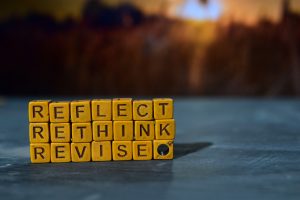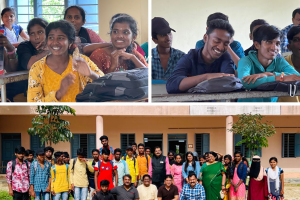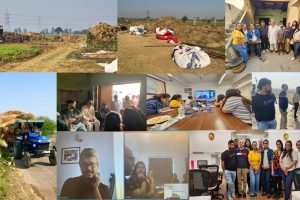Re-imagine the way you tell your story
Edited excerpts from the second Viewpoint Roundtable
March 27, 2015 at the Olive Beach, Bangalore
Participants:
Arundhati Raja, Co-founder of Jagriti Theatre in Bangalore
Lavanya Sankaran, Author of two bestselling works of fiction – ‘The Red Carpet’ and ‘The Hope Factory’
Tara Kini, Consultant in education and music
Shoba Narayan, Award winning author and columnist (moderator)
What is the essence of memorable storytelling? How can we craft messages that resonate and stay with our audience? Brands grapple with these and similar questions on a regular basis. In our quest for answers, we can draw lessons from the creative arts – on ways to create resonance, evoke emotion and explore innovation. The exercise is likely to yield new ideas for brand expression and storytelling.
We caught a whiff of these possibilities at the 2nd Viewpoint Roundtable that brought together artists who are completely immersed in the creative process through the work that they do.
In a lively discussion laced with wit and wisdom, the panelists gave us a view of their world, their daily routines and their techniques for staying focused, among other things.
We have presented some parts of this discussion here:
Introduction:
Shoba: Imagery that stays with us, which is what we are all in the business of, has a few things in common. It is original, authentic and it captures a time and space that is appropriate. One image that comes to mind is Kalidasa. When he talked about cranes flying in the sky, he said they look like garlands without the posts on either side. I think that’s a quintessentially Indian image and not something that Shelley or Yeats would have come up with. They would have had flowers in vases; we have flowers in garlands. And so, this session is to invite you into a different world – not one dominated by powerpoint presentations but one that speaks from the heart, sparks images and inspires.
The Source of Seeking Inspiration
Tara: The source of my creativity is definitely the core of my being. There is a fundamental principle that everything in the world is a combination of three qualities – Sattva, Rajas, and Tamas. Sattva has been defined as the source of creativity, Rajas as that of action and Tamas as that of inertness. The theory is that every character and everything around us is a combination of these three qualities in different proportions. I know I am in touch with my core being when the Sattva is at its peak. That very often comes through stillness – the kind of stillness that occurs when the Sattvik nature of my personality is uppermost and when creativity happens.
Pushing Past Creative Blocks
Lavanya: One thing I do is to go back to first principles. No matter what the story – a cartoon of a single page, a novel of a thousand pages, a play, or an advertisement – there is one basic ingredient every good story has to have. It has to have conflict. So, when you go back to first principles in order to uncover conflict and ways in which it can give the situation an interesting pull, you suddenly have the potential for a great story. Let’s say you have a man of great integrity who never pays a bribe. However, if it turns out that this is the only way he can save his daughter’s life, you then have a very interesting dilemma. How he resolves it can be an ad for hospital care or a 1,000 page Russian novel. I find that helpful. If I find myself not moving, it helps to come back to: where’s the conflict?
Balancing Imagination And Structure
Arundhati: The words ‘tradition’ and ‘innovation’ are thrown around a lot and I often have a problem with this. There was a quote I cannot forget from a leader of a big corporate giant. He said, “We do not believe in tradition here; we believe in innovation and in moving forward.” So my question then is: if we do not believe in tradition and do not have something to innovate from, then where are we going? There is a lot of innovation in theatre right now and that is great. But even to devise a theatrical piece requires some knowledge and if we don’t leave text for someone else to follow, then we have just created a fleeting piece of work that cannot be replicated. I am not a writer. Writing a play is perhaps one of the most difficult things that anyone can do. You must have a story and characters that are worth listening to. Unlike reading, the theatregoer cannot just put the book down and walk away. So structure and creativity go hand in hand. You need free flowing creative ideas but they also need to be harnessed into some kind of structure that works for you.
Keeping the Audience in Mind
Tara: When I do my ‘riyaaz’ (or practice), I do have an audience in mind. However, the riyaaz for Dhrupad essentially involves listening to oneself. We practice a note for an hour and are really listening to ourselves through the process. It is not that simple because by the time you have put your energy into creating the right sound for the note, you have no space left to listen. You become so much the doer that it is hard to become the observer. So the challenge lies in becoming the observer of your own art at the point that it is being created. But I find that when you do get into that space, you are resonating completely with your core. You have probably been to a concert and heard a collective ‘Aah!’ in the audience at some point during the performance. How is it that so many people who don’t know each other have had that moment? It is because the performer has entered a zone. When that resonance occurs for the performer, it gets conveyed to the audience. You don’t worry about the audience or their reaction at that point because essential communication between them and the performer has taken place.
Shoba: The Westerners call it flow. We call it Brahmananda Sahodara which is the equivalent of realizing the divine or being transcended. I think what they are all talking about is transcendence where performer and the audience are taken to a different plane.
Personal Routines For Enabling Creativity
Tara: I have five points in this process. The first one is listening to oneself and that is a big part of the rigor of the art and practicing that definitely brings about stillness and encourages creativity. The tanpura is on and there are three things you are watching out for as you listen to a note. You are looking at the stability and clarity of the note as well as its synchronization with the tanpura. The moment you try to separate yourself into the witness position, it’s meditation. That really is the crux of the practice.
The second aspect is to connect with the child in you through activities such as painting, using clay or just getting messy.
The third one is watching one’s thoughts and getting to know oneself better through this practice. The moment you are an observer, that’s stillness. It’s not easy.
The fourth point is about capturing the eureka or ‘aha’ moment (which typically happens in the shower) and once you have captured it, you arrive at my fifth point – persistence. You really have to work at it. An alternate definition of creativity (provided by Madhu Nataraj , a dancer and friend) is when you can find a meeting or converging point for two ideas that are travelling in parallel streams. It is difficult and there are times when you feel like letting it go. But persistence is important.
Arundhati: I think Tara has said it all for me. There is not that much of a difference in thoughts and approach between the various art forms. It is important to sharpen your concentration, which really comes down to breathing exercises. If you are going into something, don’t just run into it. Five deep breaths are all you need to get the oxygen going. Another technique that we credit to Stanislavski who pioneered method acting is that of sitting on the stage and not moving for at least sixty seconds. It’s difficult but also helpful and inward looking.
Lavanya: For me, writing is about going into a safe space where one can metaphorically take one’s clothes off and caper about without feeling self-conscious. There are a few things I do to help the process. I carefully curate what I read because if you are going to write well, you have to read well. When I was younger, I thought writing was a mental activity. Now as I get older, I realize it is a very physical activity. You are engaging mind, spine, body, brain, stomach… there is tension going up and down your writing and it comes into play in the kind of energy you bring into it. So movement is important. I find that language changes with every type of movement. I don’t just sit at a desk and write, for example. I also stand and write. There are other things I do to bring my mind into a good verbal space. Sometimes that involves reciting poetry out loud. I work on certain words for vocabulary, playing with them and going back to find their roots. I may read a few sentences out loud from the work of a favorite author. Sometimes I do math. Strangely, algebra is fantastic at triggering words. There are two shlokas I sometimes recite eleven times and that may lead to a creative surge. I often pick one or two of these routines before starting my writing practice. I also cut myself off from email and the outside world when I am working.
Shoba: I will give you some value add to these fantastic points that our panelists have made. With regard to Lavanya’s point about taking time off from external distraction, there are apps that can help with this. Pomodoro is a free app with a timer that you set for twenty minutes before taking a five minute break. Studies have shown that this is the length of time associated with peak or optimal productivity. Freedom is an inexpensive app that gets installed on the computer and which prevents the user from entering the internet. Self-control is another free app that keeps the user from accessing specific sites. So, this is a good way to temporarily block common sites that interfere with productivity, including Facebook and Twitter.
Brand Communication That Resonates
Lavanya: I am not going to name any particular brand but I find there are things that I appreciate. The best ads are created by those who know how to tell a story and if they can do it with humour, that’s even better. But the thing that is non-negotiable is to do it with excellence. Excellence is not a thing you aspire to, it’s a thing you do.
Arundhati: Way back in the early 70s, Surf Excel came out with an iconic ad featuring a person called Lalitaji, a typical middle class housewife. The ad went head to head with a competing ad about a low cost washing powder called Nirma. It had a very catchy jingle that you may all remember. The Surf Excel ad made the point that their detergent was worth the extra cost and it used real people to make this point. That, along with the fact that it was relevant to what was happening at the time was the reason it worked. There are two more modern examples that I would like to talk about. One is a Pepperfry ad featuring a young couple trying to pick furniture. There is a natural and well acted exchange between them as they argue over their choices. It is a scenario that anyone can relate to, regardless of age. And that’s why I think you remember the ad, along with the brand behind it. In contrast, a Vodafone ad shows a young person preparing to fly abroad with an emergency supply of homemade pickle being delivered to him at the airport. You can relate to it at one level because it is a nostalgic situation that many of us are familiar with. But it is not entirely what happens in the modern context. Young people may go overseas and travel these days but then so do their parents.
Tara: I just want to talk about one point that was made earlier and that is excellence. Quality really works in a message. I am not much of a TV watcher and so am not completely familiar with recent ads. But something like ‘Mile sur mera tumhara’ with its patriotic theme and star lineup of dancers and musicians (including the likes of Bhimsen Joshi and Balamurali Krishna), would not have been so impactful and memorable were it not for the quality of the piece. Quality – in acting, music, or text – is key.



